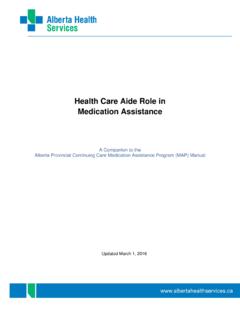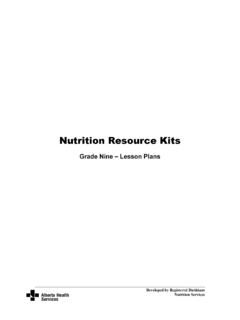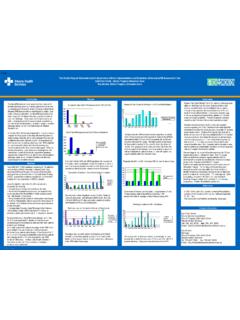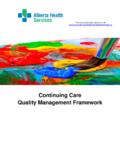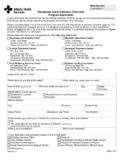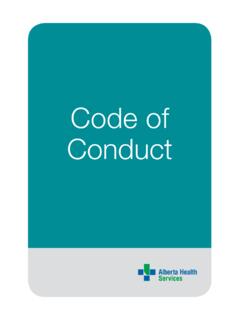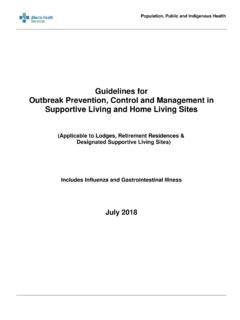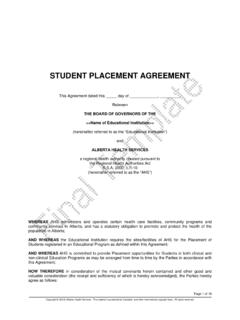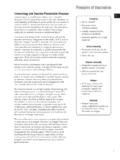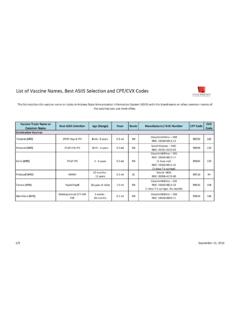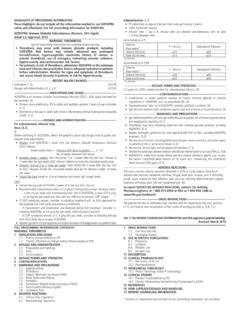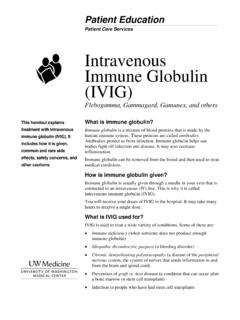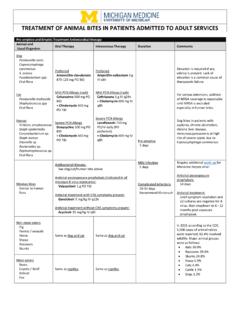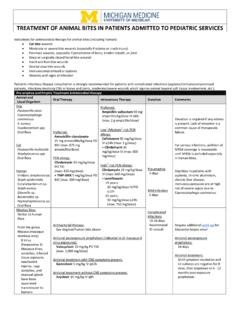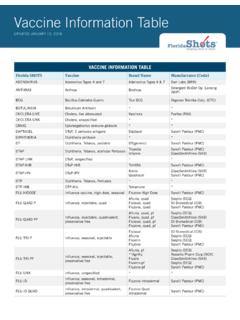Transcription of This document applies to all WinRho® SDF Covenant and …
1 WinRho SDF Page 1 of 4 WinRho SDF Class: Rho(D) immune globulin (Human) OTHER NAMES: RhoCompany: Cangene (D) immune globulin (Human), RhIG INTRAVENOUS OTHER ROUTES DIRECT IV IV Infusion Continuous Infusion SC IM OTHER Acceptable Routes* Yes Yes No Yes* Yes N/A *Subcutaneous administration is considered off-label use and may only occur at the direction of the hematologist or Center for Bleeding Disorder physician.
2 Professionals performing these restricted activities have received authorization from their regulatory College and have the knowledge and skill to perform the skill competently. DESCRIPTION OF PRODUCT: WinRho is an Rh immune globulin (RhIG). It is a sterile liquid gamma globulin (IgG) fraction prepared from pooled human plasma containing antibodies to the Rho(D) antigen found on Rh positive red cells. Viral reduction steps include filtration, and solvent/detergent treatment. One 1500 IU (300 g) vial contains sufficient anti-D to effectively suppress the immunizing potential of approximately 15 mL of Rh positive packed red blood cells (or 30 mL of Rh positive whole blood).
3 Available in sizes of: 600 IU (120 g), 1500 IU (300 g), and 5000 IU (1000 g) single-use vials. Latex-free AVAILABILITY: Supplied by CBS Contact your local laboratory/transfusion service regarding stock availability on site. INDICATIONS FOR USE: 1. Prophylaxis of Rh Hemolytic Disease of the Newborn in Pregnancy All Rh negative mothers at 28-32 weeks gestation, unless they have already formed anti-D should receive routine antenatal prophylaxis with RhIG. If undelivered after 40 weeks, consider a further prenatal dose.
4 Routine antenatal prophylaxis with RhIG should be administered regardless of, and in addition to, any RhIG administered for a potentially sensitizing event. An Rh negative woman who currently demonstrates a passive anti-D (due to prior injections) may require another RhIG dose, depending on the diagnosis and how much time has elapsed since the initial injection. All Rh negative mothers of Rh positive or weak D (Du) positive babies within 72h of delivery. If more than 72h have elapsed, RhIG should not be withheld, but administered as soon as possible, up to 28 days after delivery.
5 Additional dosing will be recommended if the initial maternal hemorrhage screen is positive and quantitative testing shows greater than 30 mL of fetal-whole blood. All Rh Negative women within 72h of a potentially sensitizing event ( therapeutic abortion, miscarriage, ectopic pregnancy, vaginal bleeding in pregnancy, amniocentesis, abdominal trauma, or external cephalic version (ECV)). If continued or intermittent bleeding is present, additional doses of RhIg at 3 week-intervals may be indicated (see above).
6 Repeat dosing for additional procedures or risks is recommended if 3 weeks have elapsed since the last dose. In the event of an intrauterine death (IUD) where no sample can be obtained from the baby, an appropriate prophylactic dose of RhIG should be administered to Rh negative previously unsensitised females within 72 hrs of the IUD diagnosis. 2. Incompatible Blood Transfusions Rh negative components should be transfused to all Rh negative females of childbearing potential (< or = to 45 years of age) whenever possible.
7 RhIG should be considered whenever Rh negative females of childbearing potential are exposed to Rh positive red cells. It is generally not necessary to administer RhIG to females without childbearing potential or to males who receive Rh positive components. However, in certain circumstances ( repeated future transfusions anticipated) it may be considered. This document applies to all Covenant and AHS sites. WinRho SDF Page 2 of 4 3.
8 Treatment of immune Thrombocytopenic Purpura (ITP) RhIG may be considered as an alternative to intravenous immune globulin (IVIG) in a non-splenectomized Rh positive patient ONLY. CONTRAINDICATIONS: 1. Prophylaxis of Rh Immunization RhIG should NOT be administered to: Rh positive (including babies) patients. Rh negative women who are Rh sensitized, and have formed anti-D as evidenced by standard antibody screening tests. Patients with history of anaphylactic or other severe systemic reaction to immune globulins.
9 Patients hypersensitive to product or to any component of its formulation. 2. Treatment of ITP RhIG should NOT be administered to: Rh negative patients. Splenectomized patients. Patients with history of anaphylactic or other severe systemic reaction to immune globulins. Patients hypersensitive to product or to any component of its formulation. WARNINGS: WinRho SDF liquid contains maltose, which can give falsely high blood glucose levels in certain types of blood glucose test systems. immune globulin administration may impair the efficacy of live attenuated virus vaccines (measles, mumps, rubella, and varicella).
10 Vaccination with live virus vaccines should be deferred until approximately 3 months after administration of WinRho SDF. Patients who have received WinRho SDF after live virus vaccination should be re-vaccinated 3 months after the administration of the immune globulin . A decrease in hemoglobin level can occur when using product for the treatment of ITP, since passively administered anti-D attaches to the D antigen on the recipients own red cells. The mean maximum decrease in hemoglobin is approximately g/L.
